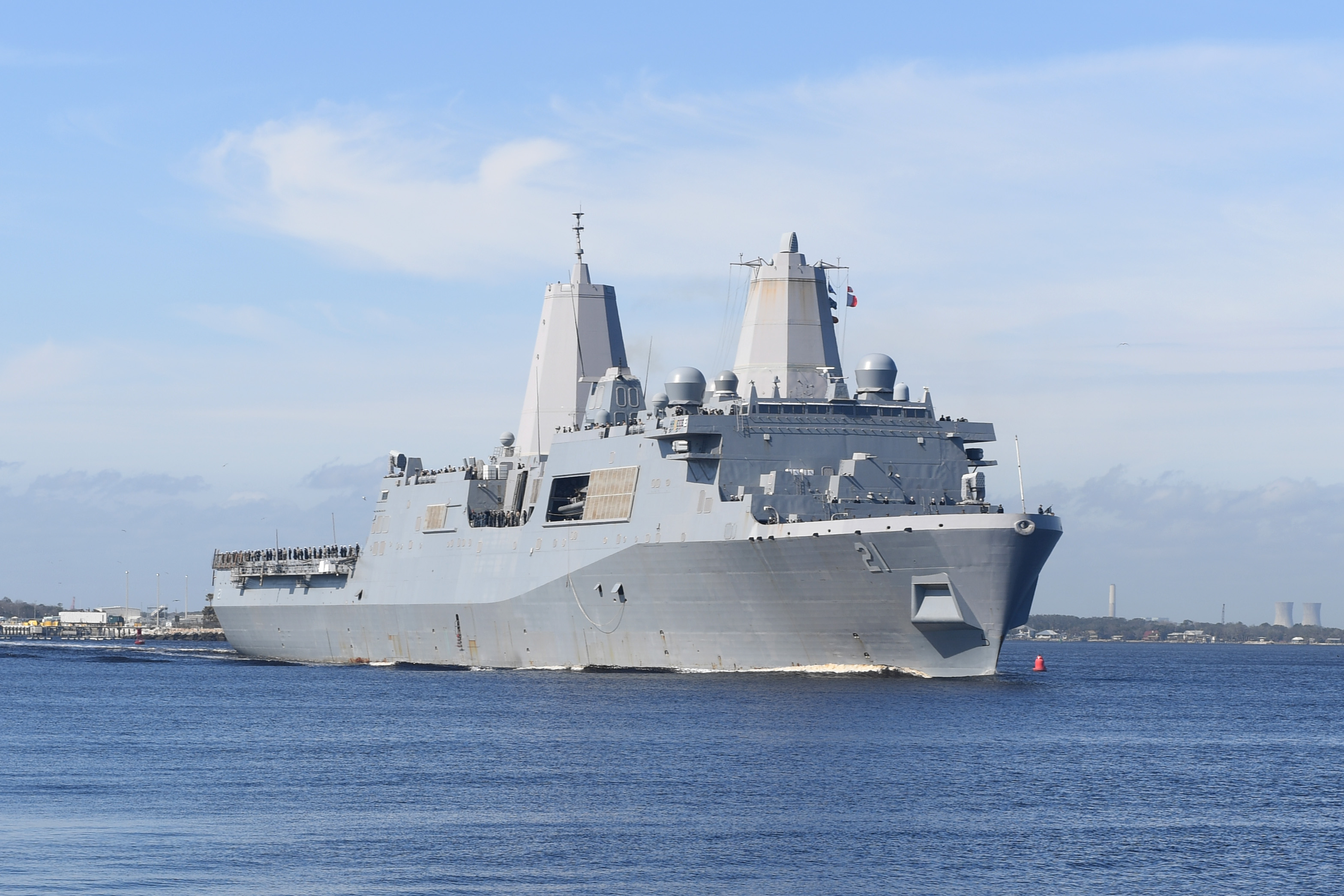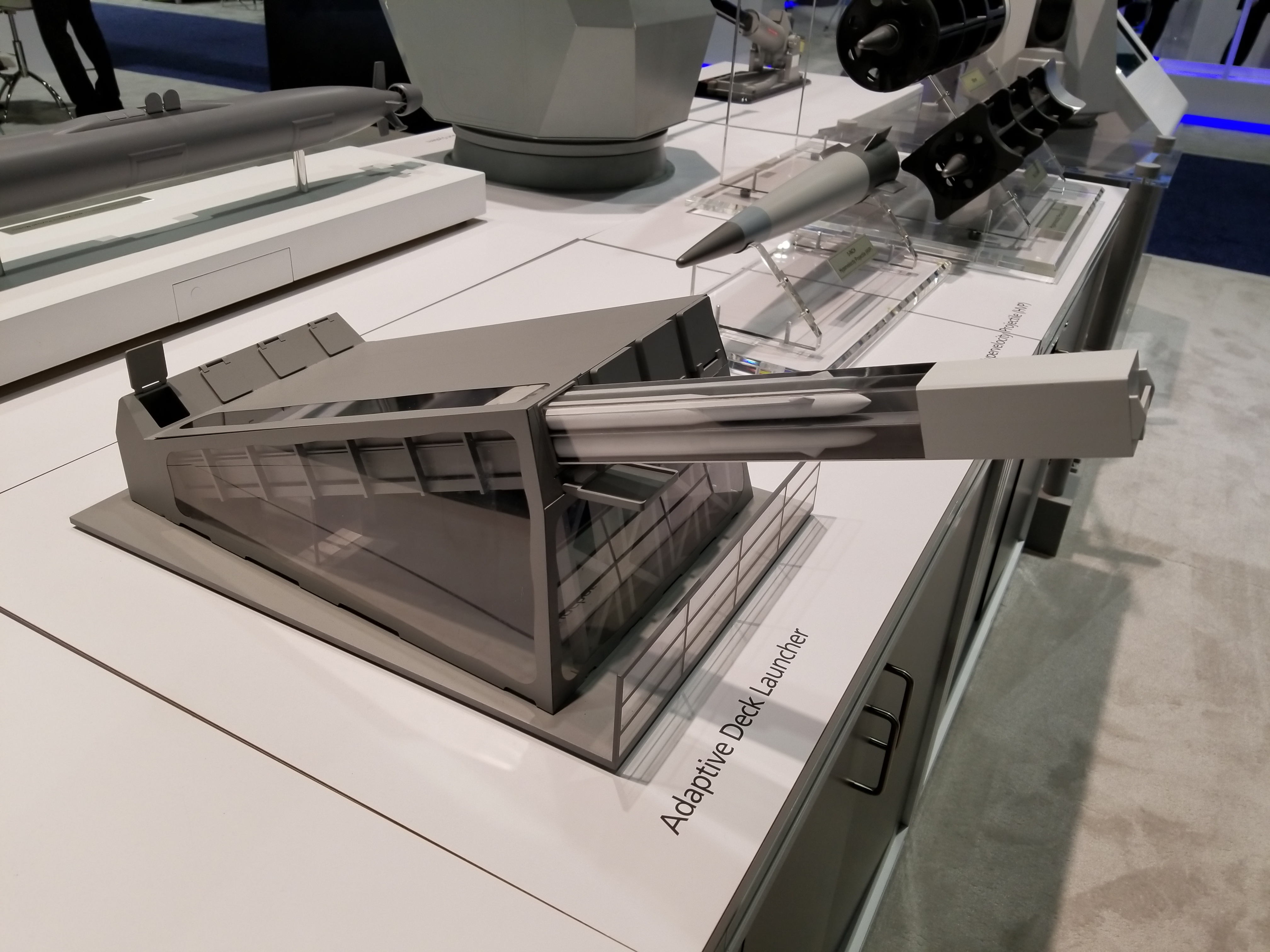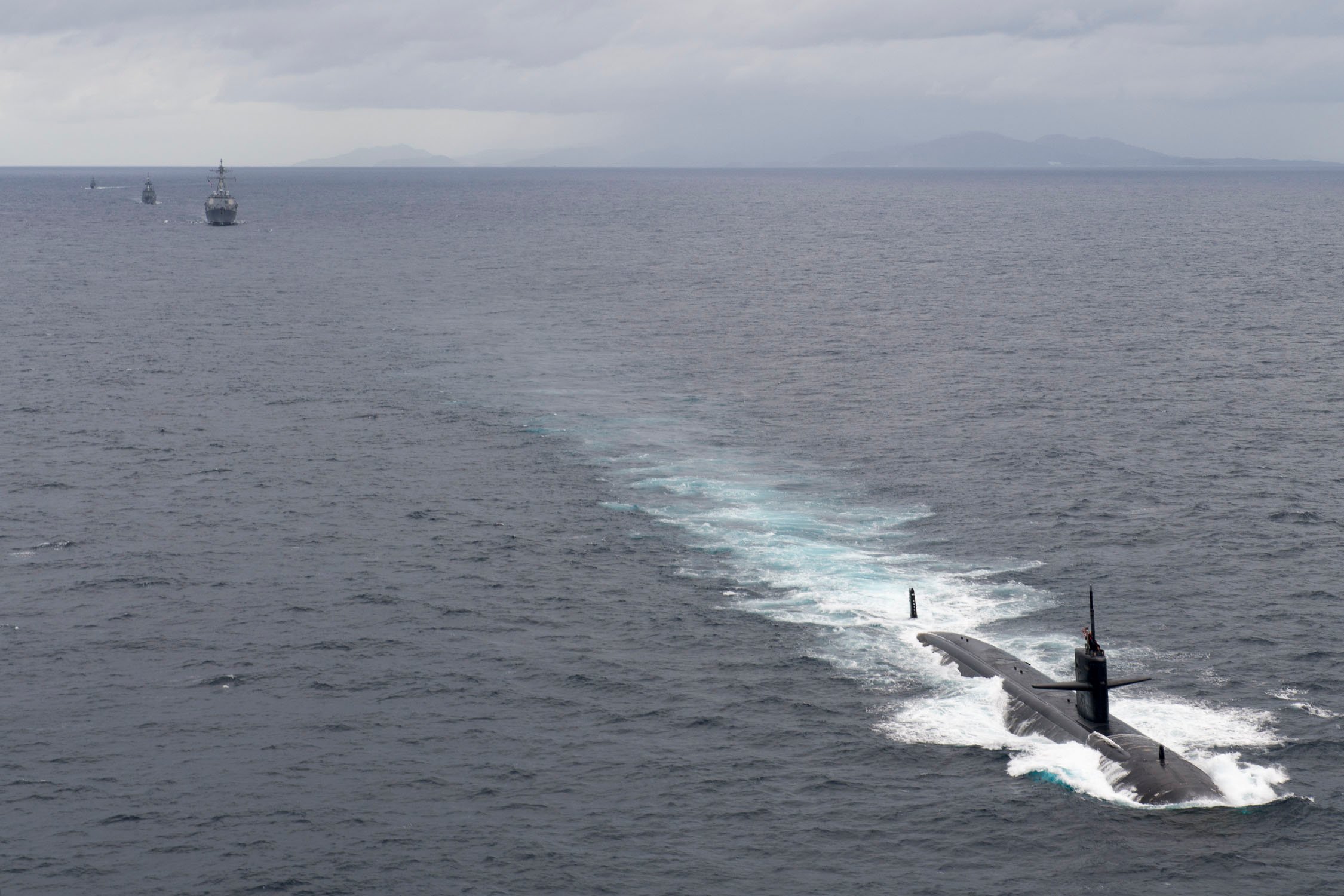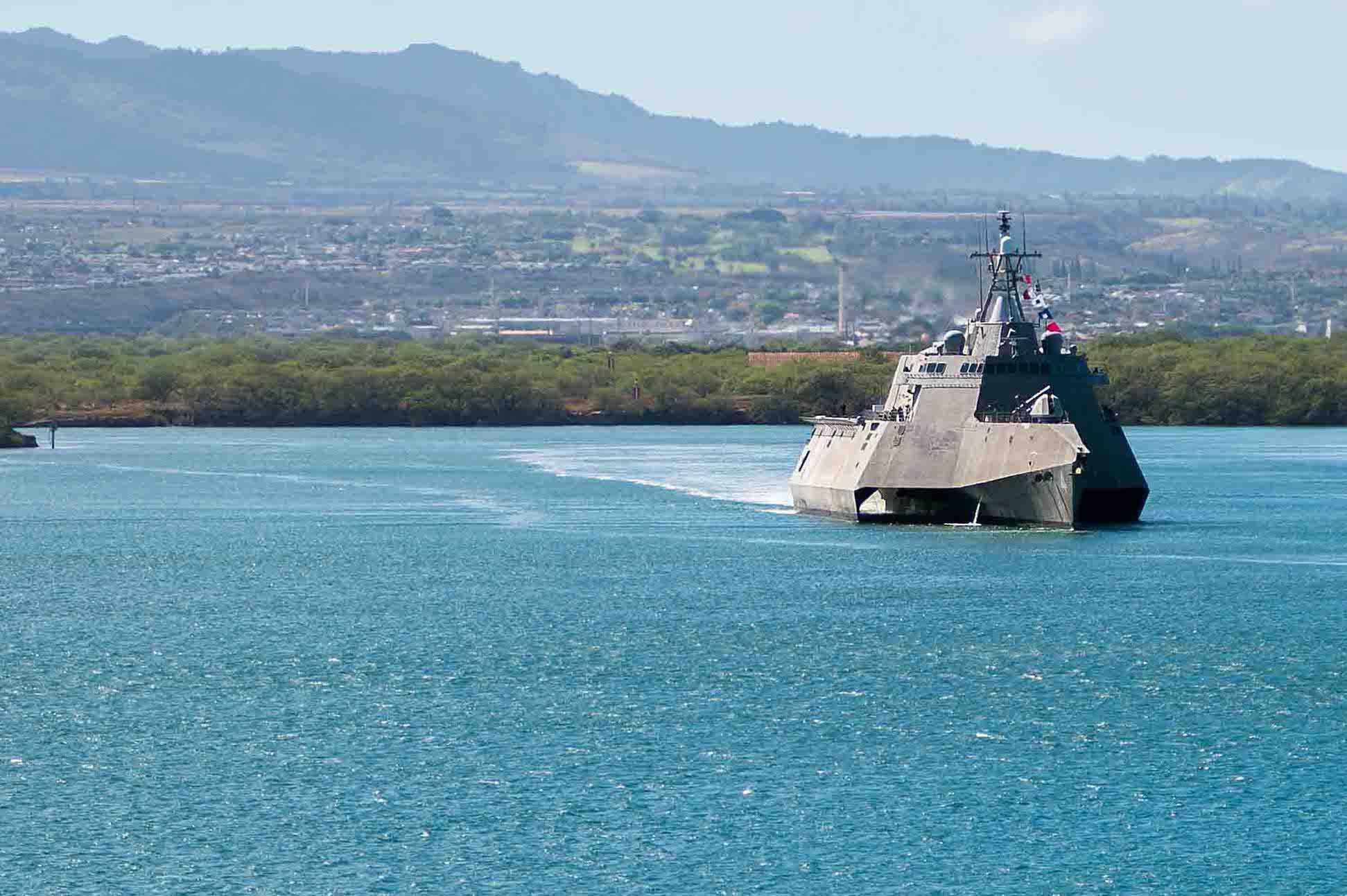
CAPITOL HILL – Navy and Marine Corps leaders are mulling if and how to up-gun the San Antonio-class LPD Flight II ships; whether to buy more attack submarines and how to extend the lives of a handful of Los Angeles-class; and other ideas to increase the size and the lethality of the fleet in the near- to mid-term.
Top Navy leadership testified at two hearings with the Senate Armed Services Committee this week and addressed several ship classes that are important to fleet operations today and going forward.
LPD Flight II Amphibs
The Navy just last week announced that its LX(R) effort to replace the Whidbey Island-class dock landing ships (LSD-41/49) would be formally named LPD Flight II, a nod to the San Antonio-class amphibious transport dock (LPD-17) design upon which these ships will be based.
With that detail determined, two questions quickly arose: how fast can the Navy buy them, and how much can the Navy and Marine Corps up-gun them?
Commandant of the Marine Corps Gen. Robert Neller frequently talks about Marines having to “fight to get to the fight” in the future, with Marines supporting sea control however they can while sailing to the ground fight, rather than passively transiting on amphibious ships and not having to do any real work until they arrive at their destination. To support this notion, Neller and others have suggested the Marines would do whatever they could – up to and including firing their Light Armored Vehicles (LAVs) from the amphibious ships, if they had to – to participate in a naval battle.
During a Thursday hearing, Sen. Roger Wicker (R-Miss.) asked Neller about the role of amphibs.
“I think every surface combatant is exactly that, it’s a warship. And there’s capabilities that we can leverage on the LPD hull form, for example,” Neller began to say.
“What if we put the vertical launch system (VLS) on the Flight II LPDs?” Wicker asked.
“I think that’s a great idea,” Neller replied.
“You agree, Secretary Spencer?” Wicker asked, turning towards Navy Secretary Richard V. Spencer, who was also testifying at the hearing.
“Most definitely,” Spencer agreed.
After the hearing, Spencer told USNI News that the VLS idea was only one being floated. Something akin to the over-the-horizon missile that the Littoral Combat Ship program is in the process of acquiring – which can be bolted on to the deck of the ship rather than installed underneath the deck – would be a less intrusive option to consider.

Chief of Naval Operations Adm. John Richardson, who also testified at the hearing, told USNI News that “the key to delivering things on-time and on-schedule is stable design before we start building. So as we move forward … this system the secretary described is attractive because it’s a canister, you load it on, it’s almost a standalone system. You don’t have to change the ship’s design a lot.”
With the LPD Flight II program, Richardson said a focus is “how do we get the best ship at the best value and the best schedule for that” – which could point to a bolt-on option rather than a redesign to incorporate VLS.
The LCS’s over-the-horizon missile competition is still ongoing, with a contract award expected in the third quarter of this fiscal year, and whichever missile system is selected may be one option for the LPD Flight II program for the sake of commonality. Another option being discussed is a BAE Systems angled “VLS-like” launcher that is fully compatible with missile canisters developed for the Mk-41 VLS system. Much like Boeing’s Harpoon missile that USS Coronado (LCS-4) has used to hit over-the-horizon surface targets, the BAE Systems “Adaptable Deck Launcher” would be bolted on to the deck and controlled through the ship’s combat system. Charlie McCullough, director of maritime business development at BAE Systems’ Platforms & Services, told USNI News earlier this month that the Adaptable Deck Launcher could fire the Standard Missile, Tomahawk, Evolved SeaSparrow Missile and others that can be fired from a VLS cell.

During a Tuesday hearing of the SASC seapower subcommittee, Wicker asked Assistant Secretary of the Navy for Research, Development and Acquisition James Geurts about the LPD Flight II acquisition plan.
“It’s a derivative design, so that will be a high-confidence acquisition,” Geurts said.
Lawmakers included funding in the recently-passed Fiscal Year 2018 spending bill for an LPD-30 hull, which Geurts decided earlier this month would be the first of the Flight II ships. The Navy had already put in a request for FY 2019 by the time the 2018 spending bill was passed, and the 2019 request did not include any funds for the LPD program.
“Our current strategy is award that ’18 ship as quickly as we can to ensure we support … the Marine Corps, and then I think we’ll look closely – it would appear to me that the serial production opportunities for the continuous production of that LPD-17 would be right for either a multiyear or a block buy,” Geurts told the seapower subcommittee.
“Currently our next buy is in ’20. … If you were to add some economic order quantity or long-lead funding in ‘19, that could accelerate delivery of those. If that’s not available, we could do a block buy or a multiyear in FY ‘20. Putting some money in FY ‘19 would help schedule a little bit, but we could execute in either manner.”
The first 13 LPDs were bought one at a time – no multi-ship deals were ever used – partly due to quality issues in the early ships and partly due to instability within the program in terms of requirements and total program quantity. With the design proven and stable – except for the discussion around the VLS cells – the Navy and Ingalls Shipbuilding in Pascagoula, Miss., would be in a strong position to negotiate a multi-ship buy.
DDG and SSN Life Extensions

After announcing last week that the Navy would extend the service life of every single Arleigh Burke-class destroyer out to 45 years as a means of boosting the size of the fleet and reaching the Navy’s 355-ship goal faster, Spencer said on Thursday that “we also have some other plans we’re working on, so stand by.”
The Navy is considering a number of options to reach 355 ships even faster – so long as the plan reaches the right balance of ship types – submarines, destroyers, small surface combatants, amphibious ships, and so on – balances new ship procurement with the ability to man and maintain existing ships, and considers industrial base needs, he said.
During the Tuesday seapower subcommittee hearing, Vice Adm. Bill Merz, the deputy chief of naval operations for warfare systems, said extending the entire Arleigh Burke class to a 45-year life – including the ships under construction today and that have not even been built yet – has been done with previous ship classes and would be considered again down the road as an efficient way to retain more ships in the fleet.
“This is not without precedence: we did it with the Ohio class (SSBNs and SSGNs). Probably aren’t any other classes right now, they’re all too new –Virginia (SSNs) may be a candidate, depending on her fuel usage over her life; and then of course the small surface combatants are all relatively new, that may be another candidate later on in the shipbuilding plan as we get more data back on how the ship is performing,” Merz said.
Though the Los Angeles-class attack submarines cannot be extended as a whole class, as many as five boats will be given new reactor cores and extended, with the Navy planning to re-core and extend the life of the first sub in FY 2019.
With the size of the attack submarine force declining for many more years until it eventually begins to grow again – even as combatant commander demand for the SSNs far exceeds the Navy’s capacity – Geurts said, “we think we can extend the life of five of those. That will not solve the problem, it will mitigate a little bit the worst part of the dip, so that’s something we’re studying closely.”
Attack submarines are projected to hit a low of just 42 boats in FY 2028, and destroyers would hit a low of 88 in FY 2035, as older hulls retire, according to the Navy’s most recent long-range ship plan. Overall the Navy is bracing for a dip in fleet size from about 2025 to 2032 – but moves like extending all the DDGs’ lives and extending up to five SSNs change the timing and the depth of that dip in fleet size.
Merz said the Navy is closely looking at years where it could buy a third Virginia-class attack submarine – something industry has made clear it wants – in between buying the Columbia-class ballistic-missile submarine, which is the Navy’s top acquisition priority and, with a hefty cost, will put a strain on the rest of the shipbuilding budget during the 2020s.
“Where we sit today is, we can’t build ships and deliver them in time to fill in that dip,” Merz said, partly due to the lengthy nature of shipbuilding and partly due to the looming Columbia-class bill.
“However, extending the class of DDG-51 is the only lever we’ve pulled so far; we are still looking at candidate years for a third SSN, and then all the other ship lines that we identified excess capacity that, working with Congress, we may be able to continue to bolster those lines more rapidly. It will help recover from the dip, but there will still be a dip outside the [five-year Future Years Defense Program] to a degree.”
LCS Operations

After USNI News reported last week that no Littoral Combat Ships would deploy this year as a result of most of the LCS fleet being in maintenance now and a need to “reset” while transitioning to a new training and crewing model, Merz, Richardson and Spencer were asked about the LCS program by Sen. Tom Cotton (R-Ar.).
Richardson acknowledged that the LCS is “a program that has been through some troubled times, and I would say that in the past we probably pushed that ship out forward-deployed a little bit ahead of its time, before the program had stabilized and we had done the appropriate testing and gained the confidence. As soon as I got in as the chief of naval operations I directed the commander of naval surface forces to take a look at that program, rationalize it, and make it look a lot more like a normal shipbuilding program and a ship operating program. So this is what led to changes in the maintenance approach, changes in the blue-gold crewing, the way that we are going to homeport these squadrons and forward-deploy them.
“2018 is really a reflection of that shift, and so starting in 2019 we’re going to start forward-deploying those: they’ll be sustainable, they’ll be more lethal by virtue of the enhancements we’re putting on those Littoral Combat Ships,” Richardson continued.
“We have 24 deployments planned between ‘19 and ‘24, and so really ‘18 is a reset year to get maintenance and manning in place so that we can deploy these in a sustainable fashion.”





